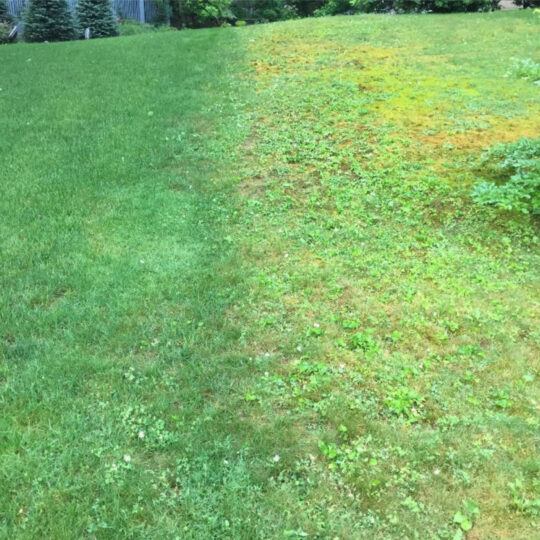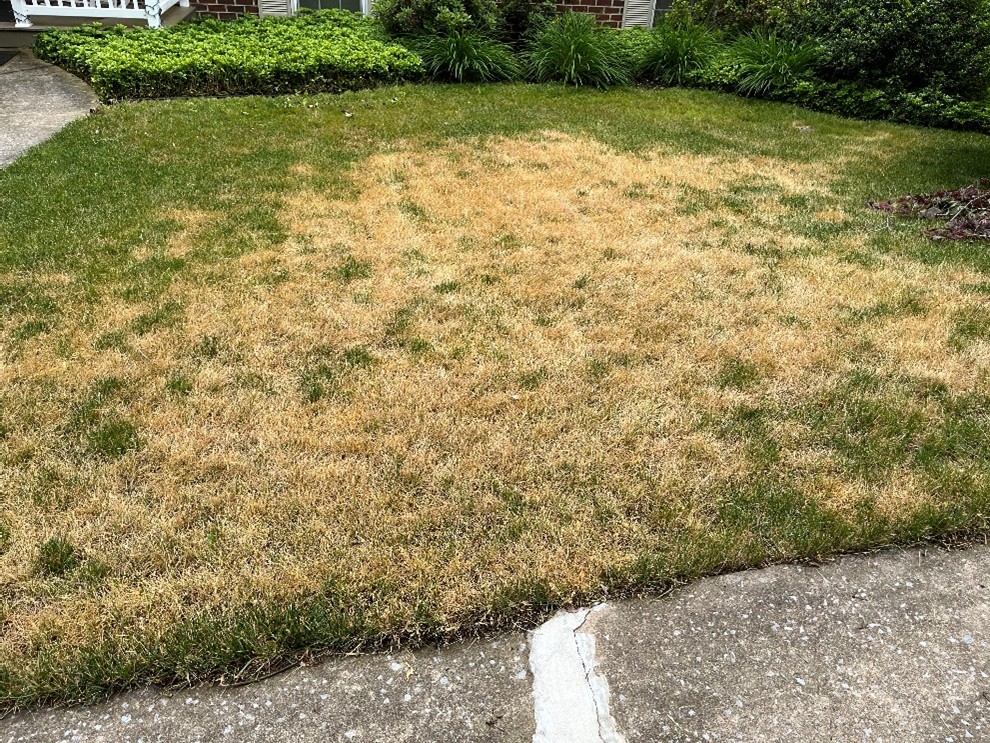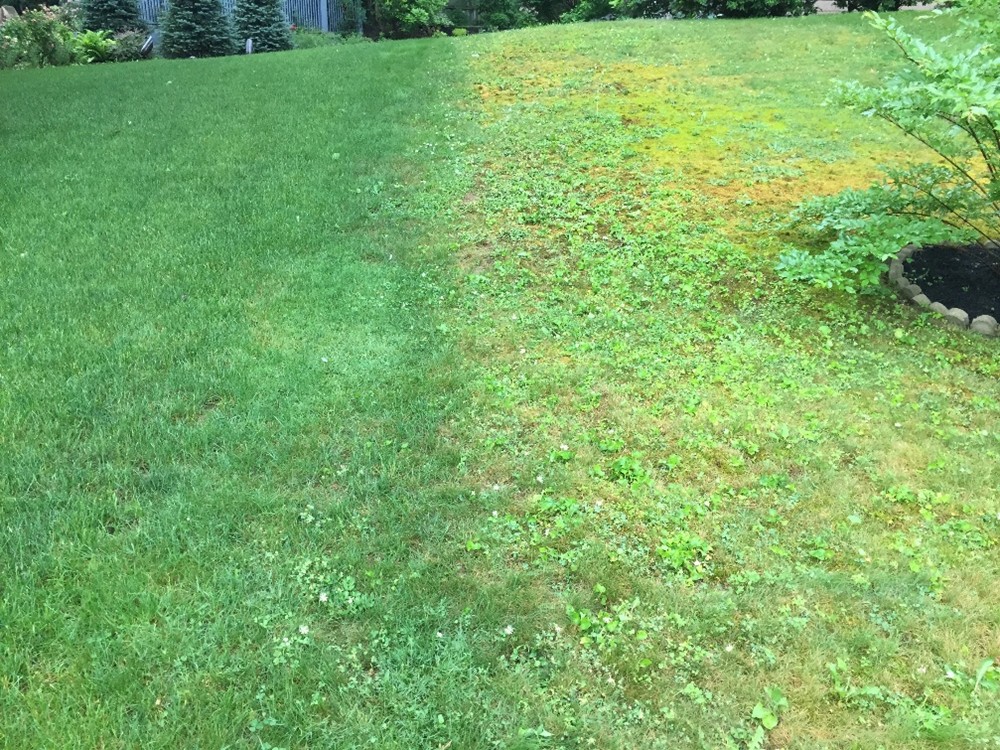Spring Lawn Care in Full Bloom
Green Image Spring Newsletter

Below are a few explanations about what lawns in our area may be experiencing this spring. Although every lawn is different, some trends are common, and certain maintenance practices now will pay dividends down the road.
The Drought of 2024
The condition of your lawn this spring is likely a reflection of how well the turf endured the drought and heat in 2024. Although conditions varied around the commonwealth, southcentral to southeast Pennsylvania was subject to the worst of the dry, hot weather. Lancaster, York, and nearby counties were categorized by The National Drought Migration Center (Pennsylvania | U.S. Drought Monitor) as “abnormally dry” on Oct. 15, whereas counties closer to Philadelphia were under “severe drought” conditions. Many non-irrigated lawns were showing signs of drought stress as late as November.
Normally, turfgrasses are well adapted to withstand some degree of heat and drought. Most turfgrasses (Kentucky bluegrass, ryegrass, and fine fescues) become semi-dormant and turn a tan or brown color under moderate summer drought conditions. Others, such as tall fescue, remain green for longer periods because of a deep root system that can take advantage of moisture that is deeper in the ground. If the lawn in not trampled or situated over poor soil, new growth resumes from the base of the plant when moisture and cool temperatures return in fall. However, in extreme drought that extends into late summer and fall, and in high traffic areas, grass may die in patches and disintegrate over the fall and winter. In such cases, seeding or sodding may be required for lawn recovery.

Drought-damaged Ky bluegrass lawn.
Recovery and Turfgrass Seed Germination
Late summer and early fall are normally times of year when rains and cooler conditions promote turf recovery and when overseeding operations take place. However, when extended drought occurs into fall, lawns remain mostly brown, and grass seeds do not germinate. Although some late turfgrass seedling emergence took place in 2024 as a result of spotty showers in fall, in many cases, this occurred too late to allow grass plants to mature and fill in thin areas of drought-damaged lawns. Depending on local conditions in late fall and winter, some seed planted during late summer/fall of 2024 may survive the winter and germinate later in spring. However, if grass seed absorbed enough water to begin the germination and emergence process last fall, only to undergo subsequent drying conditions and cold weather, the chances of surviving the winter months are doubtful. Consequently, some spring overseeding (sometimes called “interseeding”) may be necessary to fill in intermediate to large gaps in turf.
Fertilizer and Crabgrass Control
The good news is that once temperatures warm and spring rains commence, turfgrasses in well-fertilized lawns will fill the small- to medium-sized gaps that occurred during summer and fall of 2024. A good strategy for enhancing the health and density of turf in spring is to apply nitrogen fertilizer and a preemergence herbicide to prevent crabgrass from emerging and competing with desirable turfgrasses later in spring and early summer. Most professional lawn care services apply nitrogen and preemergence herbicides together before crabgrass seeds begin to emerge in mid-April. Because of the extended drought conditions last fall, some additional nitrogen fertilizer may be beneficial for the first round of treatments this spring. Use of coated fertilizer that releases nutrients as soil temperatures warm will ensure turfgrasses receive nitrogen in a timely manner.
Application of a preemergence herbicide at the same time nitrogen fertilizer is applied in early spring (prior to mid-April) will prevent early germinating crabgrass from emerging and taking over your lawn later in the season. For lawns that require overseeding, a special type of preemergence herbicide can be applied that is specific to crabgrass and will not interfere with turfgrass seed germination. A second application of a preemergence herbicide is often required later in the spring for season-long control, as some crabgrass seed germinates in late spring and early summer.

A well-fertilized lawn (left) showing thicker turf and fewer weeds than non-fertilized lawn (right).
Looking Ahead
Finally, as lawns green up and grasses begin to make rapid growth in late April and May, homeowners should see significant improvement. Keep in mind that broadleaf weeds, such as dandelion and clover, will be appearing around the same time that grasses begin to make rapid growth, and postemergence broadleaf herbicide applications will be required to selectively remove these from the lawn.